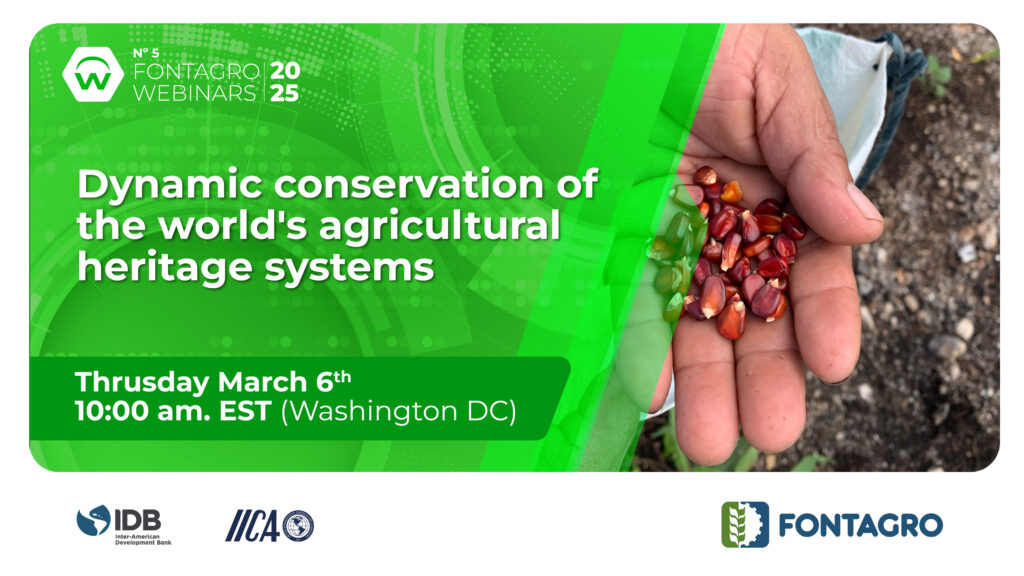
The Global Agricultural Heritage Systems (SIPAM) Program, launched by FAO in 2002, recognizes traditional agricultural systems as dynamic socio-ecological systems of terrestrial and marine landscapes that integrate ecological, social, and cultural dimensions.
In Latin America and the Caribbean, 7 SIPAM have already been designated in 4 countries: Brazil, Chile, Ecuador (2), and Mexico (2), and the program has great growth potential in the region. This webinar will highlight the importance of SIPAM and the dynamic conservation of traditional agroecosystems.
It is argued that transdisciplinary collaboration—where local communities actively contribute—is essential to ensure that agricultural heritage remains adaptive, resilient, and relevant in a changing world.



Panelists: – José María García Álvarez-Coque, International Economics and Development Group at the Universitat Politècnica de València, Scientific Advisory Group of the SIPAM Program.
– Clelia María Puzzo, Senior Officer, FAO SIPAM Program Secretariat
More information about SIPAM at: https://www.fao.org/giahs/regions/latin-america-and-the-caribbean/en
***
About FONTAGRO
FONTAGRO was created 1998 with the purpose of promoting the increase of the competitiveness of the agri-food sector, ensuring the sustainable management of natural resources and the reduction of poverty in the region. The objective of FONTAGRO is to establish itself as a sustainable financing mechanism for the development of agricultural technology and innovation in Latin America and the Caribbean and Spain, and to establish a forum for the discussion of priority topics of technological innovation. The member countries are: Argentina, Bolivia, Chile, Colombia, Costa Rica, Ecuador, Spain, Honduras, Nicaragua, Panama, Paraguay, Peru, Dominican Republic, Uruguay and Venezuela. In the last 27 years 204 regional agricultural innovation platforms have been co-financed for an amount of US $ 150.7 million, which has reached 531 institutions and 35 countries worldwide.
